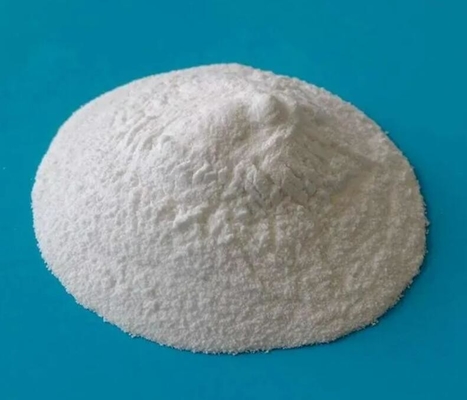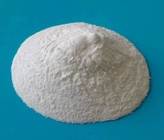Food Grade Sodium Carboxymethyl Cellulose Powder E466 Thickeners For Oil Field

Contact me for free samples and coupons.
WhatsApp:0086 18588475571
Wechat: 0086 18588475571
Skype: sales10@aixton.com
If you have any concern, we provide 24-hour online help.
x| Color | White | Appearance | Light And Free Flowing Powder |
|---|---|---|---|
| Viscosity | 6000 | Qty In 20' FCL | 16MT |
| CAS No | 9000-11-7 | Type | Thickeners |
| CMC | Application Of CMC In Washing | Chemical Food Ingredients | Sodium Carboxymethyl Cellulose |
| High Light | Food Grade Sodium Carboxymethyl Cellulose Powder,Oil Field E466 Thickeners,Sodium Carboxymethyl Cellulose Chemical Food Ingredients |
||
CMC
Sodium Carboxymethyl Cellulose (CMC) can be use in oil field. It can be provide the high viscosity.
Carboxymethyl cellulose (CMC) is a water-soluble polymer derived from cellulose, which is a natural component of plant cell walls. It is commonly used in the food, pharmaceutical, and cosmetic industries as a thickener, stabilizer, and emulsifier.
Chemical properties:
Carboxymethyl cellulose is a white to off-white, odorless, and tasteless powder that is highly soluble in water. It is made by chemically modifying cellulose with chloroacetic acid to produce carboxymethyl groups (-CH2-COO-) on the cellulose backbone. The degree of substitution (DS) of carboxymethyl cellulose refers to the number of carboxymethyl groups per glucose unit in the cellulose molecule and can affect its solubility, viscosity, and other properties.
Uses:
Carboxymethyl cellulose is widely used in the food industry as a thickener, stabilizer, and binder. It is often added to processed foods such as baked goods, dairy products, sauces, and dressings to improve their texture, viscosity, and mouthfeel. In the pharmaceutical industry, it is used as a binder in tablets and as a viscosity enhancer in liquid formulations. It is also used in cosmetic formulations as a thickener, emulsifier, and moisture retainer.
Regulations:
Carboxymethyl cellulose is generally recognized as safe (GRAS) by the US Food and Drug Administration (FDA) when used in accordance with good manufacturing practices. It is also approved for use in food products by the European Union and other countries.
Carboxy methyl cellulose (CMC) or cellulose gum is a cellulose derivative with carboxymethyl groups (-CH2-COOH) bound to some of the hydroxyl groups of the glucopyranose monomers that make up the cellulose backbone. It is often used as its sodium salt, sodium carboxymethyl cellulose.
![]()
Uses CMC is used in food science as a viscosity modifier or thickener, and to stabilize emulsions in various products including ice cream. As a food additive, it has E number E466. It is also a constituent of many non-food products, such as K-Y Jelly, toothpaste, laxatives, diet pills, water-based paints, detergents, textile sizing and various paper products. It is used primarily because it has high viscosity, is non-toxic, and is hypoallergenic. In laundry detergents it is used as a soil suspension polymer designed to deposit onto cotton and other cellulosic fabrics creating a negatively charged barrier to soils in the wash solution. CMC is used as a lubricant in non-volatile eye drops (artificial tears). Sometimes it is methyl cellulose (MC) which is used, but its non-polar methyl groups (-CH3) do not add any solubility or chemical reactivity to the base cellulose.
Following the initial reaction the resultant mixture produces approximately 60% CMC plus 40% salts (sodium chloride and sodium glycolate). This product is the so-called Technical CMC which is used in detergents. A further purification process is used to remove these salts to produce pure CMC which is used for food, pharmaceutical and dentifrice (toothpaste) applications. An intermediate "semi-purified" grade is also produced, typically used in paper applications.
![]()
Insoluble microgranular carboxymethyl cellulose is used as a cation-exchange resin in ion-exchange chromatography for purification of Proteins.Presumably the level of derivatization is much lower so that the solubility properties of microgranular cellulose are retained while adding sufficient negative charged carboxylate groups to bind positively charged proteins.
CMC is also used in ice packs to form a eutectic mixture resulting in a lower freezing point and therefore more cooling capacity than ice.
Aqueous solutions CMC have also been used to disperse carbon nanotubes. It is thought that the long CMC molecules wrap around the nanotubes, allowing them to be dispersed in water.
Enzymology CMC has also been used extensively to characterize enzyme activity from endoglucanases (part of cellulase complex). CMC is a highly specific substrate for endo-acting cellulases as its structure has been engineered to decrystallize cellulose and create amorphous sites that are ideal for endglucanase action. CMC is desirable because the catalysis product (glucose) is easily measured using a reducing sugar assay such as 3,5-Dinitrosalicylic acid. Using CMC in enzyme assays is especially important in regard to screening for cellulase enzymes that are needed for more efficient cellulosic ethanol conversion. However, CMC has also been misused in earlier work with cellulase enzymes as many had associated whole cellulase activity with CMC hydrolysis. As the mechanism of cellulose depolymerization has become more understood, it should be noted that exo-cellulases are dominant in the degradation of crystalline (e.g. Avicel) and not soluble (e.g. CMC) cellulose.
![]()





